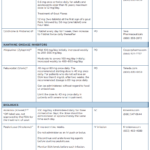Dr. Fields finds it helpful to explain to patients that there are three different groups of treatments for gout, and that medications that help for one aspect, such as an acute flare, won’t help for lowering urate, and vice versa.
Treatments available for acute flares, or “rescue” therapies, include non-steroidal anti-inflammatory drugs, oral and injected corticosteroids, and colchicine. For most refractory cases, Dr. Fields prescribes an interleukin 1 (IL-1) inhibitor, such as anakinra.
Secondly, ULT is critical for long-term disease remission. These therapies include the xanthine oxidase inhibitors, allopurinol and febuxostat; the uricosurics, probenecid and lesinurad; and the intravenous uricase, pegloticase. Most HSS gout patients take a xanthine oxidase inhibitor as their first mediation.
A third group of medications is used as bridge therapy, generally for the first six months of urate-lowering therapy, to prevent mobilization flares that often accompany the early phases of lowering urate. This group includes colchicine, the most studied and most commonly used bridging agent, low-dose non-steroidal anti-inflammatory drugs, or occasionally a low-dose oral corticosteroid. In special circumstances, an IL-1 inhibitor is used.
In particular, Dr. Fields has found that a lot of gout patients meet criteria for urate lowering, but either don’t take this medication despite guideline recommendations, such as those by the ACR, or are on suboptimum doses. “Getting patients to their urate goal, most commonly less than 6.0 mg/dL, has been well shown to be effective in getting gout patients to remission, and careful titration of our present urate-lowering medications is generally quite successful in attaining this goal,” Dr. Fields says. “But unfortunately, patients commonly stop their ULT, or remain on a low dose without follow-up of their urate levels, and so never attain or maintain their urate goal.”
Other Components
Additional topics that the symposium covered included:
- The causes of gout, including the genetic component;
- An emphasis on appropriate optimal treatment outcomes and goals (i.e., most patients should expect to have no gout attacks as the long-term outcome);
- Effective treatment requires patience and diligence;
- Importance of understanding uric acid goals, how, specifically, medication works to address this, and how and why uric acid levels are monitored. Understanding this goal as the underpinning of treatment contributes to a concrete, measurable goal for the patient and physician to achieve together;
- Putting side effects and risks of treatment into perspective, and providing context of short- and long-term benefits;
- An overview of co-morbidities and conditions—putting treatment and management into context of these conditions (i.e., kidney dysfunction, coronary heart disease, obesity, high cholesterol and triglycerides and diabetes);
- Effective treatment requires patience and diligence; and
- Dietary guidelines for gout management, presented by a nutritionist.
After the symposium, all participants were asked to complete an evaluation, which included questions regarding key discussion points. Participants were also asked if they intended to change self-management behavior, and the likelihood of them discussing their gout treatment and management with their provider as a result of attending the program.


